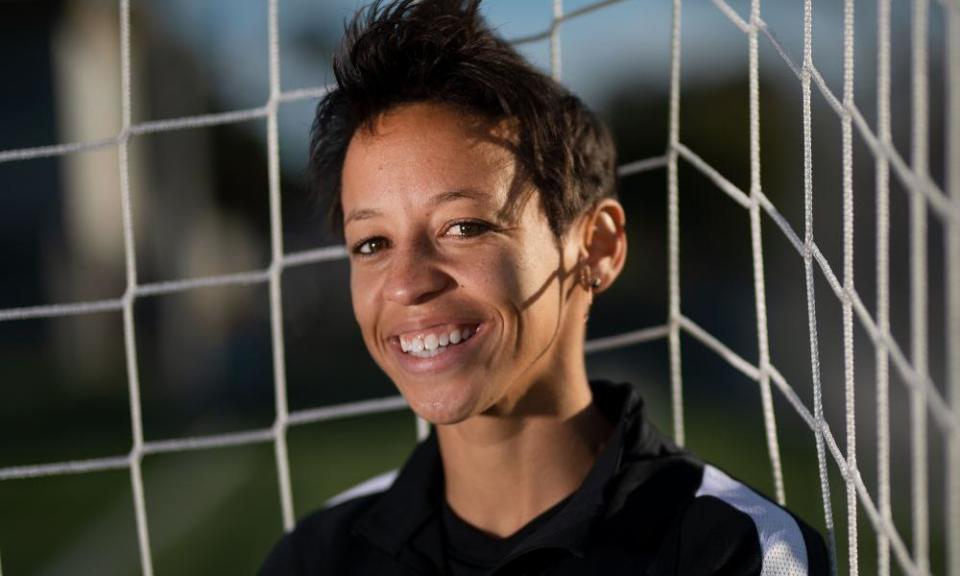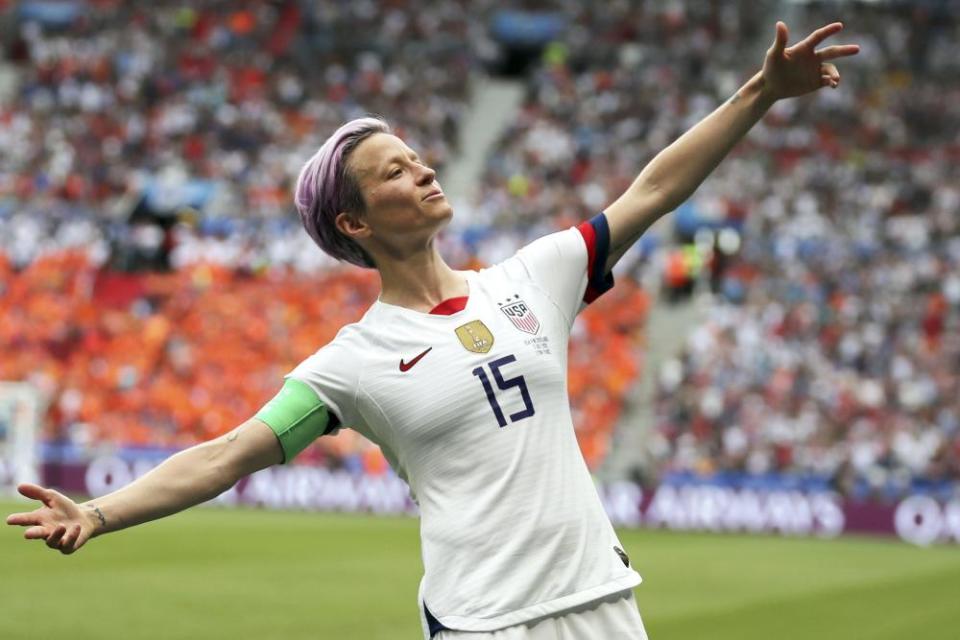‘Collective action works’: is football closing in on equal pay for men and women?
Fifa confirmed last week that it is tripling the prize money available for teams competing at the Women’s World Cup in July and August to $110m (£90m) and is committed to making the men’s and women’s World Cup prize pots equal by the 2026 and 2027 editions. The Guardian sat down with the general secretary of the international players’ union Fifpro, Jonas Baer-Hoffmann, and the organisation’s director of global policy and strategic relations in women’s football, Sarah Gregorius, to discuss the changes.
In October, Fifpro sent a letter signed by 150 women’s national team players calling for equal World Cup prize money – that demand has now been met. How significant is it?
Baer-Hoffmann: “We obviously must credit Fifa for taking this step, which is very important and will have a huge amount of impact, once we’ve confirmed and closed off all the details. But ultimately, the credit should be with the players for getting us here. The collective strength and that very visible unity amongst the playing group, between 25 national teams, behind very simple clear demands, is what pushed it over the line.
“I think that letter was really impactful. There’s years going into this with the US team, Norway, Australia and in many other teams and countries. But seeing that basically the majority of the players who lace up their boots in Australia and New Zealand are united behind this was very important.”
Gregorius: “The players’ reaction is our reaction. We keep them updated live, as it’s all happening and they sort of celebrate it, but they want to know the details. A lot of them have ongoing domestic conversations about prize money splits and things like that. So, they are waiting for the details in order to advance those conversations as well. I don’t know if any of them will pop champagne just yet. When it’s all done and dusted and it’s all settled, then maybe we will see a bit more of that.”
What should prize money distribution look like? Should it be different to the way it’s done now?
Gregorius: “Prize money at the moment is a reward for participation and in recognition of how far our team gets in a tournament. To me, where it would make the biggest difference is if that was able to be repurposed as preparation money. Being professional six months after the tournament is not as useful as being professional six months before the tournament. So, if there is a world where it can be reimagined and repurposed to go partly towards preparation as well as a reward or recognition of how far a team goes in the tournament, that would be the perfect construct, particularly for women’s football.
“Those types of schemes do exist. They used it during Covid – other sports, other athlete movements, have used it before. So, it would be innovative for football, but it’s not innovative in the grand scheme of things.”

How big could the impact of Fifa committing to equal prize money for both World Cups be on confederations, federations and clubs?
Baer-Hoffmann: “You now start from a certain baseline when you get to the negotiation table that is just fundamentally higher than it was in the past. Our demand in the letter, for example, is that the players get at least 30% of World Cup prize money. That means that’s where the negotiation starts – you don’t start at 10%, you don’t start at 15%, you don’t start with justifying why there should be any – you start from 30%. And if you then have a strong position, you negotiate from there upwards.
The same, of course, goes for prize money, if Fifa, at the highest level of the game, takes the position that in a relatively short time-frame prize money should be equal. Well then, there’s little excuse for others not to have that same ambition and to make that happen.”
What has this huge win demonstrated to the players?
Baer-Hoffmann: “It proves that collective action works. It proves the narrative that the players have built, in particular in women’s football over the last few years, and the leadership role that they’ve taken in professionalising league by league, country by country. The credit is to the players who have been willing to shape their careers, not just on the basis of their own sporting success, but in terms of the legacy they want to leave behind. It is the prime example of why collectivism, unity, concrete demands, and being willing to state those loudly and publicly and fight for them – the way that athletes have created change in sports for decades – still holds true.”
Gregorius: “What is really important is that it demonstrates to the players that when you do this en masse, as a collective, you’re also safe. Don’t get me wrong, I love it that players speak out and they use their voice to advocate for change, but many of them do so at the sacrifice or risk of their careers. We can advocate for change on your behalf and keep you protected, you don’t have to stick your neck out in order for there to be structural change when we’re talking about equality and compensation and things like that. Too many players in the past, and still today, have to sacrifice themselves, in a way, in order for change to happen. That is really important because there’s still too many cases of retaliation against players.”
Baer-Hoffmann: “That’s why we still need unions.”
For a long time, it has felt like there has been a bit of a culture of acceptance, of gratitude for whatever crumbs are handed down to women’s football. Have we reached a point where we are shifting away from that culture?
Baer-Hoffmann: “Equality, emancipation and all of these issues and the discussion and movements around them inspires athletes the same way that it inspires people in the rest of society. Then there is the fact that players have shown to each other that they can achieve things like this. They’ve also seen that sporting success and big events are actually delivering viewing figures and showing what kind of interest there is. So it is various things coming together. What this generation of players will leave behind is probably the biggest jump in professionalisation and equalisation of the game so far. That’s ultimately good for all football, because it will again inspire constructive changes to men’s football too, it will speak to a greater audience and the social footprint of the game will increase.”

Are players more aware of the power they have than ever before?
Gregorius: “Yes, footballers are realising their own power but it’s so finite at the same time. The Lionesses had to win the Euros, Marcus Rashford is a once-in-a-generation player with a very specific background. These are diamonds in the rough, so to speak. The moment that these athletes have to seize upon is very short and very linked to success. I’m glad that players are able to think in those moments about what’s possible, but I’m worried about it becoming an expectation, because players are there first and foremost to play. It’s what they want to do. It’s their passion. And I don’t want it to be seen as the job of a player to shift society.”

 Yahoo Sport
Yahoo Sport 





































